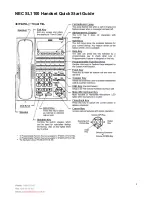
7-2
High Performance Incubator
Thermo Scientific
Section 7
Maintenance
Stainless Guidelines
Stainless steel is an alloy of steel with chromium and nickel that increase
the metal’s resistance to rust and corrosion. Yet, if not properly cared for,
stainless steel can rust and corrode.
Exposure to air provides the passivation, or oxide layer coating, for clean
stainless by producing a thin, durable chromium-oxide film that forms
rapidly on the alloy surface to give stainless its characteristic “stainless”
quality. Also exposure of the surface to other oxidizing environments can
produce a passivating film or coating.
However, if free oxygen is not available due to scale or contamination
buildup, the metal surface may become vulnerable to rusting and corrosion
as well as pitting. But by maintaining neutral pH and conducting frequent
cleanings with detergent and water, years of trouble-free service from
stainless steel products can be obtained.
Distilled water is recommended. Please note, if this water is very pure, it
may be corrosive to stainless. When filling a bath or incubator, ALWAYS
add 2 to 40 ppm (20 to 40 mg/liter) disodium phosphate or sodium
bicarbonate, adjusting dosage to provide a pH value of 7 to 9. If not
available, use clean, aerated soft tap water, provided the total solids
concentration is < 500 PPM. We do NOT recommend using 18 meg-ohm
deionized water. If this is the only source of treated water available, mix
with regular tap water at a 50/50 ratio.
Check pH regularly. If pH is <6.0, add disodium phosphate to increase pH
to a 7 to 9 value. Sodium carbonate or sodium bicarbonate may be used
but they tend to form scale that must be rinsed out regularly. If pH is
>10.0, add sodium bisulfate to decrease pH to a 7 to 9 value. Avoid adding
harsh alkalines or acids since these may cause localized corrosion and result
in unstable pH.
The Alloy called Stainless
The pH Factor








































